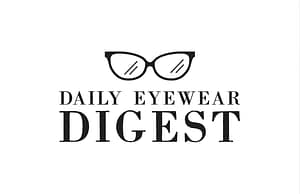Biometric data collection is becoming a vital part of healthcare, enabling a deeper understanding of individual health patterns. With the advancement of wearable technology, smart glasses have emerged as a new tool in this field. These glasses, equipped with sensors and real-time data capabilities, have the potential to revolutionize how we monitor and manage health. By providing continuous and unobtrusive health monitoring, biometric-enabled smart glasses could become a game-changer in personalized medicine and remote healthcare.
What Is Biometric Data?
Biometric data refers to physical or behavioral characteristics that can be used to identify individuals and monitor health metrics. Common forms include fingerprints, retinal scans, and physiological data like heart rate and temperature. In healthcare, this data is increasingly used for patient monitoring, diagnosis, and customized treatment plans. With the advent of smart glasses, the ability to collect such data has moved beyond traditional devices, making health monitoring more integrated into everyday life.
The Evolution of Smart Glasses
Smart glasses have evolved significantly since their inception, starting as niche gadgets and now serving as sophisticated health tools. Early models primarily offered basic features like heads-up displays and connectivity. Today, they integrate advanced sensors capable of monitoring various biometric indicators, making them useful for real-time health assessments. This evolution positions smart glasses as valuable assets in both personal and clinical healthcare settings.
How Biometric Data is Collected Through Glasses
Sensors and Technologies Integrated into Smart Glasses
Modern smart glasses incorporate a range of sensors to capture biometric data. These can include heart rate monitors that measure pulse through skin contact, temperature sensors that gauge body heat, and eye-tracking technology that monitors pupil response. Some advanced models even include sensors for blood oxygen levels, providing a comprehensive view of a person’s physical condition without the need for additional devices.
Types of Biometric Data Captured by Smart Glasses
The data collected by smart glasses can cover a broad spectrum of health metrics. For example, continuous heart rate monitoring can detect irregularities that may indicate potential cardiovascular issues. Eye tracking can provide insights into cognitive health by analyzing how pupils respond to different stimuli. Real-time metrics like blood oxygen levels help track a person’s respiratory function, making smart glasses particularly useful in managing conditions like asthma or chronic obstructive pulmonary disease (COPD).
Data Transmission and Privacy Concerns
The biometric data collected by smart glasses is typically transmitted to connected devices like smartphones or directly to healthcare databases. While this enables seamless data sharing with medical professionals, it raises concerns about data privacy and security. Ensuring that this data is encrypted and complies with healthcare regulations, such as HIPAA in the U.S., is critical to maintaining user trust.
Transformative Applications of Biometric Data in Healthcare
Real-Time Health Monitoring and Early Detection
One of the most significant advantages of smart glasses is their ability to monitor health metrics in real-time. For example, they can detect abnormal heart rhythms or blood pressure spikes, serving as an early warning system for serious conditions like strokes or heart attacks. This allows for quicker interventions and could potentially save lives by alerting users or healthcare providers before symptoms become severe.
Enhancing Patient Care for Chronic Conditions
Smart glasses can be a boon for managing chronic health conditions, providing constant feedback on vital signs. For patients with diabetes, smart glasses can track subtle changes in glucose levels, prompting timely actions. Similarly, individuals with eye conditions such as glaucoma can benefit from regular updates on intraocular pressure, reducing the need for frequent clinic visits.
Augmented Reality (AR) and Assisted Living
Beyond data collection, some smart glasses integrate augmented reality (AR) features, which can assist patients with everyday tasks. For elderly users or those with cognitive impairments, these glasses can provide reminders to take medications or navigate their environment safely. When combined with biometric data, this creates a powerful tool for assisted living, offering personalized care that adapts to each user’s unique needs.
Impact on Remote Healthcare and Telemedicine
Smart Glasses in Telemedicine Consultations
As telemedicine continues to grow, smart glasses offer a new way for doctors to receive real-time data from patients during virtual consultations. By integrating data directly into telehealth platforms, doctors can access accurate health metrics, improving the quality of remote diagnoses. This makes smart glasses an ideal solution for managing conditions that require regular monitoring, such as hypertension or arrhythmias.
Benefits for Rural and Underserved Areas
Smart glasses could play a crucial role in extending healthcare access to rural and underserved regions. Patients in remote locations often face barriers to frequent clinic visits, but wearable technology like biometric-enabled glasses allows for continuous monitoring from home. This reduces the need for travel, making healthcare more accessible and reducing the burden on rural healthcare systems.
The Role of AI in Analyzing Biometric Data
AI-Powered Insights from Biometric Data
Artificial intelligence (AI) plays a pivotal role in interpreting the data collected by smart glasses. AI algorithms can analyze patterns in heart rate, blood pressure, and other metrics to predict potential health risks before they manifest. This proactive approach helps healthcare providers take preventive measures, reducing the likelihood of complications.
AI and Personalized Healthcare Plans
With AI’s ability to analyze vast amounts of biometric data, smart glasses can help tailor healthcare plans to individual needs. For example, AI can identify when a patient’s heart rate deviates from their normal range, suggesting adjustments in medication or physical activity. This level of personalized care can improve patient outcomes and make health management more efficient.
Challenges and Considerations in Using Biometric Data in Glasses
Data Accuracy and Reliability Issues
While smart glasses offer impressive capabilities, ensuring the accuracy of the data they collect is crucial. Factors such as sensor placement, calibration, and external conditions can affect readings. Regular calibration and validation against standard medical devices are necessary to maintain reliability, especially in clinical settings.
Ethical and Privacy Concerns
The collection and use of biometric data raise ethical questions about data ownership and user consent. Users need to understand how their data will be used and who has access to it. Companies must be transparent about their data policies and ensure that data is not misused or sold to third parties without explicit consent.
Regulatory Landscape for Biometric Wearables
Smart glasses that collect health data are subject to regulatory oversight. For example, the FDA has guidelines for wearable devices that claim to offer medical insights. Understanding these regulations is essential for companies developing such technology, as it ensures that their products meet safety standards and can be trusted by consumers.
Frequently Asked Questions (FAQs)
How Do Smart Glasses Capture Biometric Data?
Smart glasses use built-in sensors like heart rate monitors, eye trackers, and temperature sensors to capture health metrics.
Can Smart Glasses Replace Traditional Health Monitoring Devices?
While they can complement traditional devices, smart glasses are best used alongside established health monitoring tools for a complete picture.
Are There Risks Associated with Using Smart Glasses for Health Monitoring?
Potential risks include inaccurate data due to sensor issues and concerns over data privacy, which can be mitigated with proper device use and regulations.
How Secure is the Data Collected by Smart Glasses?
Data security depends on encryption and adherence to regulations like HIPAA, ensuring that sensitive information is protected.
Which Brands Are Leading in Biometric Smart Glasses?
Brands like Google, Vuzix, and newer health-focused companies are pioneering in this space, offering advanced features for health monitoring.
What is the Cost of Biometric-Enabled Smart Glasses?
Costs vary widely, ranging from $300 to over $1000 depending on features like sensors, build quality, and connectivity options.
Conclusion: A New Era of Personalized Healthcare
Balancing Innovation with Privacy
Biometric data in smart glasses represents a new frontier in healthcare, offering the promise of real-time monitoring and personalized care. As technology advances, these devices could become essential in managing chronic conditions and improving access to healthcare. However, ensuring that these innovations respect privacy and provide accurate, reliable data is key to their success. With careful implementation, smart glasses could transform healthcare, making it more proactive, accessible, and tailored to individual needs.

